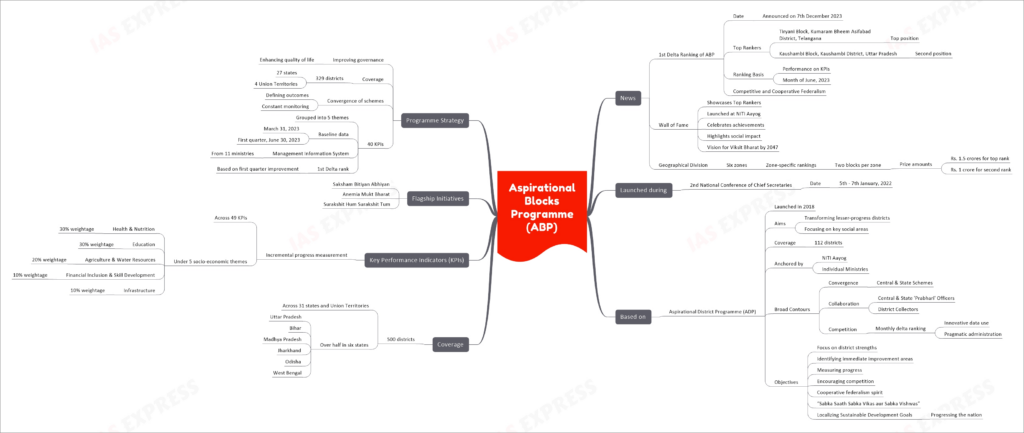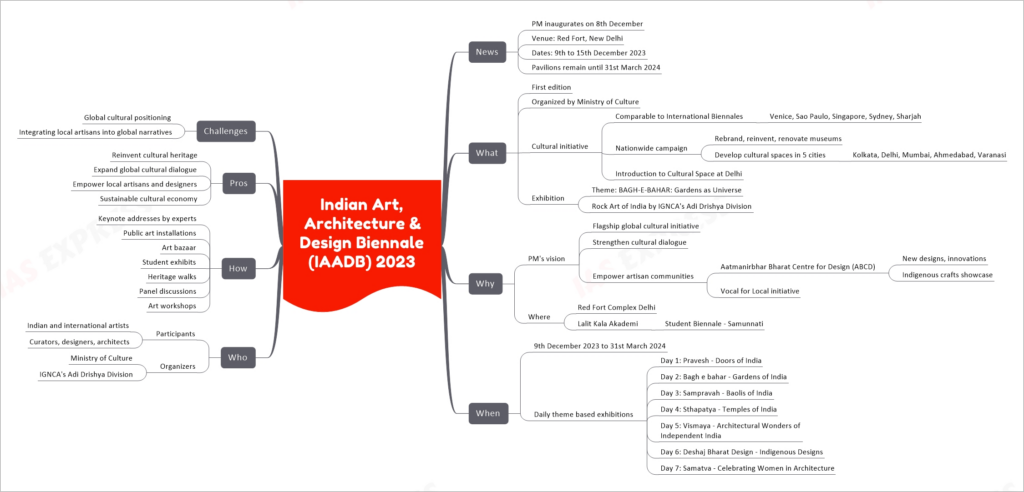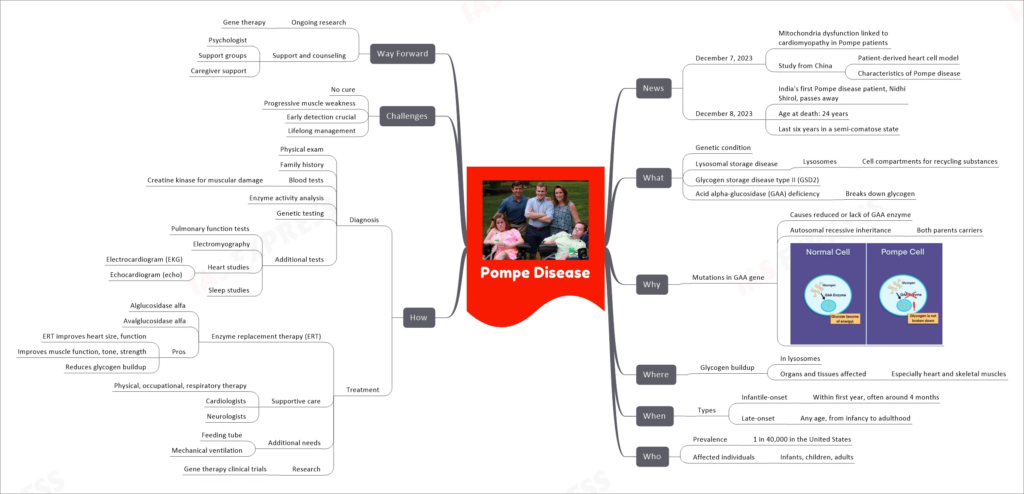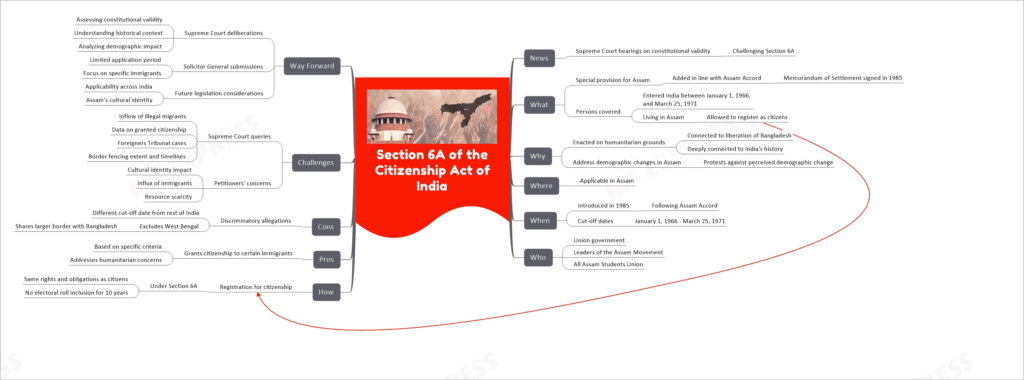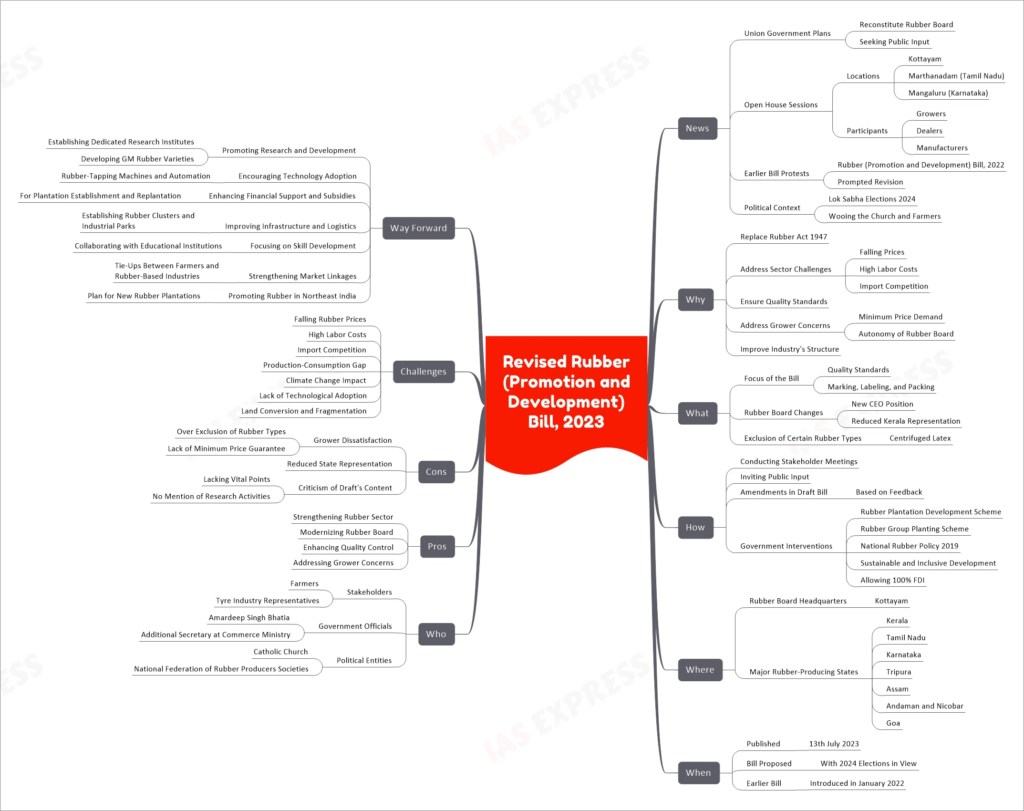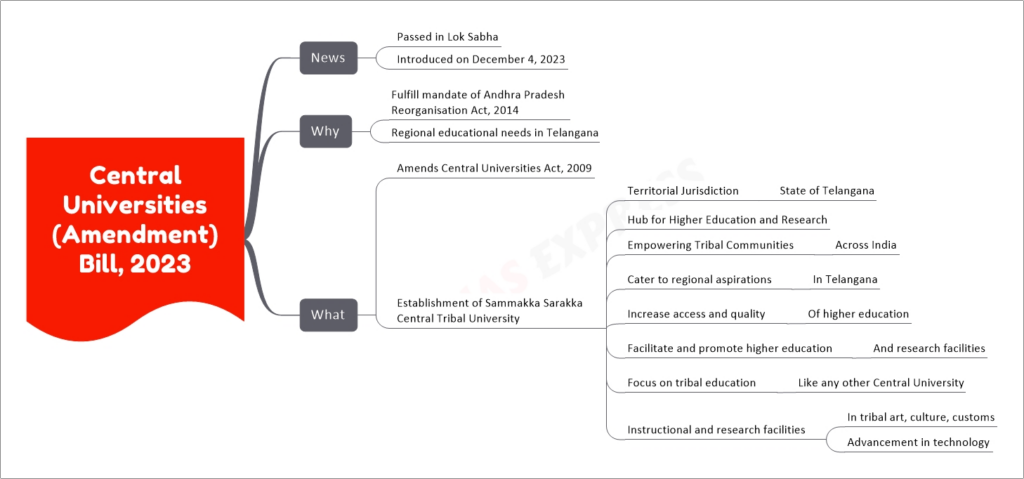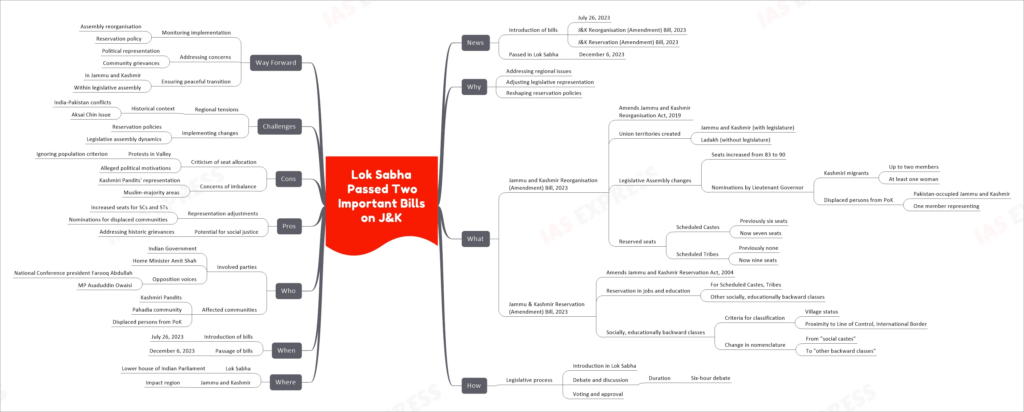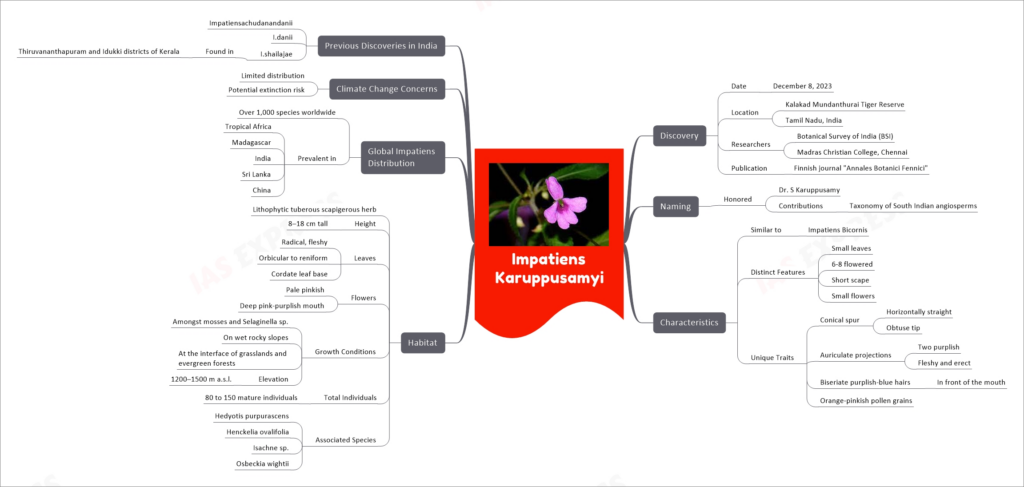[Newsbits] 8.12.2023: Pompe Disease, Aspirational Blocks Programme, Section 6A of Citizenship Act & more

| Category | Subcategory | Details |
|---|---|---|
| Aspirational Blocks Programme (ABP) | Launched During | 2nd National Conference of Chief Secretaries (5th – 7th January, 2022) |
| Based on | Aspirational District Programme (ADP) | |
| Coverage | 500 districts across 31 states and Union Territories | |
| Key Performance Indicators (KPIs) | 49 KPIs under 5 socio-economic themes | |
| Flagship Initiatives | Saksham Bitiyan Abhiyan, Anemia Mukt Bharat, Surakshit Hum Surakshit Tum | |
| Recent Developments | 1st Delta Ranking of ABP, Wall of Fame, Geographical Division | |
| Programme Strategy | Improving governance, Convergence of schemes, 40 KPIs | |
| Aspirational District Programme (ADP) | Launched in | 2018 |
| Aims | Transforming lesser-progress districts focusing on key social areas | |
| Coverage | 112 districts | |
| Anchored by | NITI Aayog and Individual Ministries | |
| Broad Contours | Convergence, Collaboration, Competition | |
| Objectives | Focus on district strengths, Identifying immediate improvement areas, Measuring progress, Encouraging competition, Cooperative federalism spirit, “Sabka Saath Sabka Vikas aur Sabka Vishwas”, Localizing Sustainable Development Goals | |
| 1st Delta Ranking of ABP | Date | Announced on 7th December 2023 |
| Top Rankers | Tiryani Block, Telangana (1st); Kaushambi Block, Uttar Pradesh (2nd) | |
| Ranking Basis | Performance on KPIs in June 2023 | |
| Competitive and Cooperative Federalism | Core strategy of the Programme | |
| Wall of Fame | Showcases | Top Rankers of ABP and ADP |
| Launched at | NITI Aayog | |
| Celebrates | Achievements and social impact | |
| Vision | Viksit Bharat by 2047 | |
| Geographical Division | Zones | Six zones with zone-specific rankings and prize amounts |
| Programme Strategy | Improving Governance | Enhancing quality of life in underdeveloped blocks |
| Coverage | 329 districts across 27 states and 4 Union Territories | |
| Convergence of Schemes | Defining outcomes, Constant monitoring | |
| 40 KPIs | Grouped into 5 themes, Baseline data from March 31, 2023, and June 30, 2023 | |
| Management Information System | Sourced from 11 ministries | |
| 1st Delta Rank | Based on first quarter improvement |
| Category | Details |
|---|---|
| News | PM inaugurates on 8th December, Venue: Red Fort, New Delhi, Dates: 9th to 15th December 2023, Pavilions remain until 31st March 2024 |
| What | First edition, Organized by Ministry of Culture |
| Cultural initiative – Comparable to International Biennales (Venice, Sao Paulo, Singapore, Sydney, Sharjah), Nationwide campaign to reinvent museums, Develop cultural spaces in 5 cities (Kolkata, Delhi, Mumbai, Ahmedabad, Varanasi), Introduction to Cultural Space at Delhi | |
| Exhibition – Theme: BAGH-E-BAHAR: Gardens as Universe, Rock Art of India by IGNCA’s Adi Drishya Division | |
| Why | PM’s vision for a flagship global cultural initiative, Strengthen cultural dialogue, Empower artisan communities, Aatmanirbhar Bharat Centre for Design (ABCD) for new designs and innovations, Vocal for Local initiative |
| Where | Red Fort Complex Delhi, Lalit Kala Akademi for Student Biennale – Samunnati |
| When | 9th December 2023 to 31st March 2024, Daily theme based exhibitions (Day 1 to Day 7 with specific themes) |
| Who | Participants: Indian and international artists, curators, designers, architects Organizers: Ministry of Culture, IGNCA’s Adi Drishya Division |
| How | Keynote addresses, Public art installations, Art bazaar, Student exhibits, Heritage walks, Panel discussions, Art workshops |
| Challenges | Global cultural positioning, Integrating local artisans into global narratives |
| Way Forward | Reinvent cultural heritage, Expand global cultural dialogue, Empower local artisans and designers, Sustainable cultural economy |
| Category | Subcategory | Details |
|---|---|---|
| News | December 7, 2023 | Mitochondria dysfunction linked to cardiomyopathy in Pompe patients |
| Study from China | ||
| Patient-derived heart cell model | ||
| Characteristics of Pompe disease | ||
| December 8, 2023 | India’s first Pompe disease patient, Nidhi Shirol, passes away | |
| Age at death: 24 years | ||
| Last six years in a semi-comatose state | ||
| What | Genetic condition | Lysosomal storage disease |
| Lysosomes as cell compartments | ||
| Glycogen storage disease type II (GSD2) | ||
| Acid alpha-glucosidase (GAA) deficiency | ||
| Why | Mutations in GAA gene | Causes reduced or lack of GAA enzyme |
| Autosomal recessive inheritance | ||
| Both parents carriers | ||
| Where | Glycogen buildup | In lysosomes |
| Organs and tissues affected, especially heart and skeletal muscles | ||
| When | Types | Infantile-onset: Within first year, often around 4 months |
| Late-onset: Any age, from infancy to adulthood | ||
| Who | Prevalence | 1 in 40,000 in the United States |
| Affected individuals | Infants, children, adults | |
| How | Diagnosis | Physical exam, family history |
| Blood tests for muscular damage | ||
| Enzyme activity analysis | ||
| Genetic testing | ||
| Additional tests: Pulmonary function tests, Electromyography, Heart studies (EKG, echo), Sleep studies | ||
| Treatment | Enzyme replacement therapy (ERT): Alglucosidase alfa, Avalglucosidase alfa | |
| Supportive care: Physical, occupational, respiratory therapy; Cardiologists; Neurologists | ||
| Additional needs: Feeding tube, Mechanical ventilation | ||
| Research: Gene therapy clinical trials ERT improves heart size, function, muscle function, tone, strength, reduces glycogen buildup | ||
| Challenges | Early detection crucial | Lifelong management |
| No cure | Progressive muscle weakness | |
| Way Forward | Ongoing research | Gene therapy |
| Support and counseling: Psychologist, Support groups, Caregiver support |
| Category | Details | Subdetails |
|---|---|---|
| News | Antonio Guterres invokes Article 99 | For war in Gaza |
| What | Special power for Secretary-General | – |
| Unique political tool in UN Charter | – | |
| Enables Secretary-General | Call Security Council meetings | |
| Issue warnings about threats | ||
| Address matters not on council’s agenda | ||
| Why | To prevent threats to international peace | – |
| To mobilize UN action | – | |
| For preventive diplomacy | – | |
| Where | Chapter XV of the UN Charter | – |
| When | First invoked in 1960 | Dag Hammarskjold on Congo conflict |
| Other notable invocations | 1979 Iran crisis (Kurt Josef Waldheim’s tenure) | |
| 1989 Lebanese civil war (Javier Perez de Cuellar’s tenure) | ||
| Who | Secretary-General of the United Nations | Discretionary power |
| Requires political judgment | ||
| How | Secretary-General may bring to UNSC’s attention | Matters threatening peace and security |
| Pros | Adds political role to Secretary-General | – |
| Key in mobilizing UN action | – | |
| Allows addressing UNSC without invitation | – | |
| Cons | Cannot ensure lasting peace | – |
| Does not change political calculations of UNSC’s powerful members | – | |
| One veto can derail interventions | – | |
| Challenges | Dependent on UNSC’s response | Needs agreement of all five permanent members |
| Vulnerable to veto power | ||
| Past failure to invoke | Example: Rwandan Genocide in 1994 | |
| Way Forward | Explore ways to enhance Article 99’s effectiveness | – |
| Address challenges related to UNSC dynamics | – | |
| Increase awareness of Article 99’s potential and limitations | – |
This topic of “Section 6A of the Citizenship Act” is important from the perspective of the UPSC IAS Examination, which falls under General Studies Portion.
Mind Map
Table Chart
| Category | Details | Subdetails |
|---|---|---|
| News | Supreme Court hearings on constitutional validity | Challenging Section 6A |
| What | Special provision for Assam | Added in line with Assam Accord |
| Memorandum of Settlement signed in 1985 | ||
| Persons covered | Entered India between January 1, 1966, and March 25, 1971 | |
| Living in Assam | ||
| Allowed to register as citizens | ||
| Why | Enacted on humanitarian grounds | Connected to liberation of Bangladesh |
| Deeply connected to India’s history | ||
| Address demographic changes in Assam | Protests against perceived demographic change | |
| Where | Applicable in Assam | |
| When | Introduced in 1985 | Following Assam Accord |
| Cut-off dates | January 1, 1966 – March 25, 1971 | |
| Who | Union government | |
| Leaders of the Assam Movement | ||
| All Assam Students Union | ||
| How | Registration for citizenship | Under Section 6A |
| Same rights and obligations as citizens | ||
| No electoral roll inclusion for 10 years | ||
| Pros | Grants citizenship to certain immigrants | Based on specific criteria |
| Addresses humanitarian concerns | ||
| Cons | Discriminatory allegations | Different cut-off date from rest of India |
| Excludes West Bengal | ||
| Shares larger border with Bangladesh | ||
| Challenges | Supreme Court queries | Inflow of illegal migrants |
| Data on granted citizenship | ||
| Foreigners Tribunal cases | ||
| Border fencing extent and timelines | ||
| Petitioners’ concerns | Cultural identity impact | |
| Influx of immigrants | ||
| Resource scarcity | ||
| Way Forward | Supreme Court deliberations | Assessing constitutional validity |
| Understanding historical context | ||
| Analyzing demographic impact | ||
| Solicitor General submissions | Limited application period | |
| Focus on specific immigrants | ||
| Future legislation considerations | Applicability across India | |
| Assam’s cultural identity |
Explanation
Section 6A of the Citizenship Act of India is a special rule about who can become a citizen in the state of Assam. It was made in 1985 based on the Assam Accord, an agreement to solve problems in Assam about people moving there. This rule says that people who came to Assam from other countries between January 1, 1966, and March 25, 1971, can become Indian citizens, but they can’t vote for 10 years. This rule was made to help people and has to do with India’s history, like helping Bangladesh become free. The Supreme Court of India is looking at whether this rule is fair and follows the constitution. Some people think it’s not fair because it treats Assam differently than other states, like West Bengal, which also has many people coming from other countries. The court is also trying to figure out how this rule has changed Assam and what should be done about people who move to India illegally.
The Revised Rubber (Promotion and Development) Bill, 2023, is an initiative by the Indian Union Government aimed at modernizing and promoting the rubber industry in India. The Bill focuses on replacing the Rubber Act of 1947 to address contemporary challenges in the industry, such as falling rubber prices, high labor costs, and increasing import competition. It proposes changes to the Rubber Board’s structure, including quality standards and stakeholder representation. The Bill has attracted both support for its potential to strengthen the sector and criticism for certain exclusions and lack of emphasis on vital areas like research. Going forward, measures such as promoting research and development, adopting new technologies, providing financial support, and strengthening market linkages are suggested to revitalize the industry.
To summarize, the Central Universities (Amendment) Bill, 2023, passed in the Lok Sabha, aims to establish the Sammakka Sarakka Central Tribal University in Telangana, focusing on empowering tribal communities and enhancing access to higher education and research in tribal art, culture, customs, and technology. It amends the Central Universities Act, 2009, in alignment with the Andhra Pradesh Reorganisation Act, 2014.
| Category | Details | Subdetails |
|---|---|---|
| News | Introduction of bills | – Date: July 26, 2023 – Bills Introduced: – J&K Reorganisation (Amendment) Bill, 2023 – J&K Reservation (Amendment) Bill, 2023 |
| Passed in Lok Sabha | – Date: December 6, 2023 | |
| Why | Addressing regional issues | |
| Adjusting legislative representation | ||
| Reshaping reservation policies | ||
| What | Jammu and Kashmir Reorganisation (Amendment) Bill, 2023 | – Amends Jammu and Kashmir Reorganisation Act, 2019 – Union territories created: – Jammu and Kashmir (with legislature) – Ladakh (without legislature) – Legislative Assembly changes: – Seats increased from 83 to 90 – Nominations by Lieutenant Governor: – Kashmiri migrants – Up to two members – At least one woman – Displaced persons from PoK – One member representing – Reserved seats: – Scheduled Castes – Previously six seats – Now seven seats – Scheduled Tribes – Previously none – Now nine seats |
| Jammu & Kashmir Reservation (Amendment) Bill, 2023 | – Amends Jammu and Kashmir Reservation Act, 2004 – Reservation in jobs and education: – For Scheduled Castes, Tribes – Other socially, educationally backward classes – Socially, educationally backward classes: – Criteria for classification: – Village status – Proximity to Line of Control, International Border – Change in nomenclature: – From “social castes” – To “other backward classes” | |
| How | Legislative process | – Introduction in Lok Sabha – Debate and discussion: – Duration: Six-hour debate – Voting and approval |
| Where | Lok Sabha | – Lower house of Indian Parliament |
| Jammu and Kashmir | – Impact region |
Impatiens karuppusamyi is a newly discovered plant species, identified on December 8, 2023, in the Kalakad Mundanthurai Tiger Reserve, Tamil Nadu, India. It was discovered by researchers from the Botanical Survey of India and Madras Christian College, Chennai, and named in honor of Dr. S Karuppusamy for his significant contributions to the taxonomy of South Indian angiosperms. The plant resembles Impatiens Bicornis but is distinguished by its small leaves, 6-8 flowered short scapes, and small flowers with unique characteristics like a conical spur, purplish auriculate projections, biseriate purplish-blue hairs, and orange-pinkish pollen grains. It grows as a lithophytic tuberous scapigerous herb, primarily amongst mosses and Selaginella sp., on wet rocky slopes at elevations between 1200–1500 meters above sea level, and is currently found only in the Agasthyamalai hill ranges within the protected area of the tiger reserve. The discovery highlights the rich biodiversity of the region and raises concerns about the potential risks of climate change on such limitedly distributed species.
